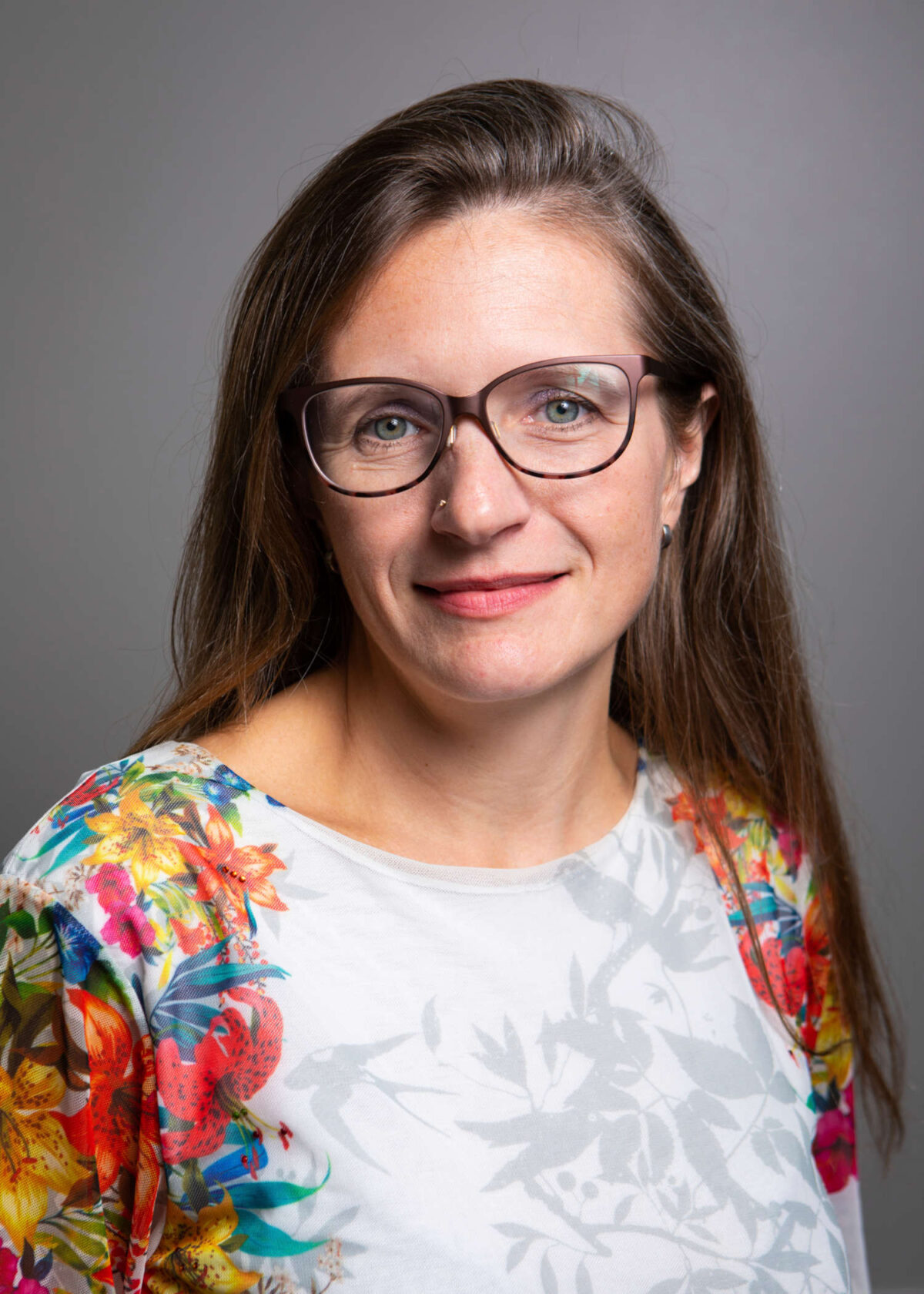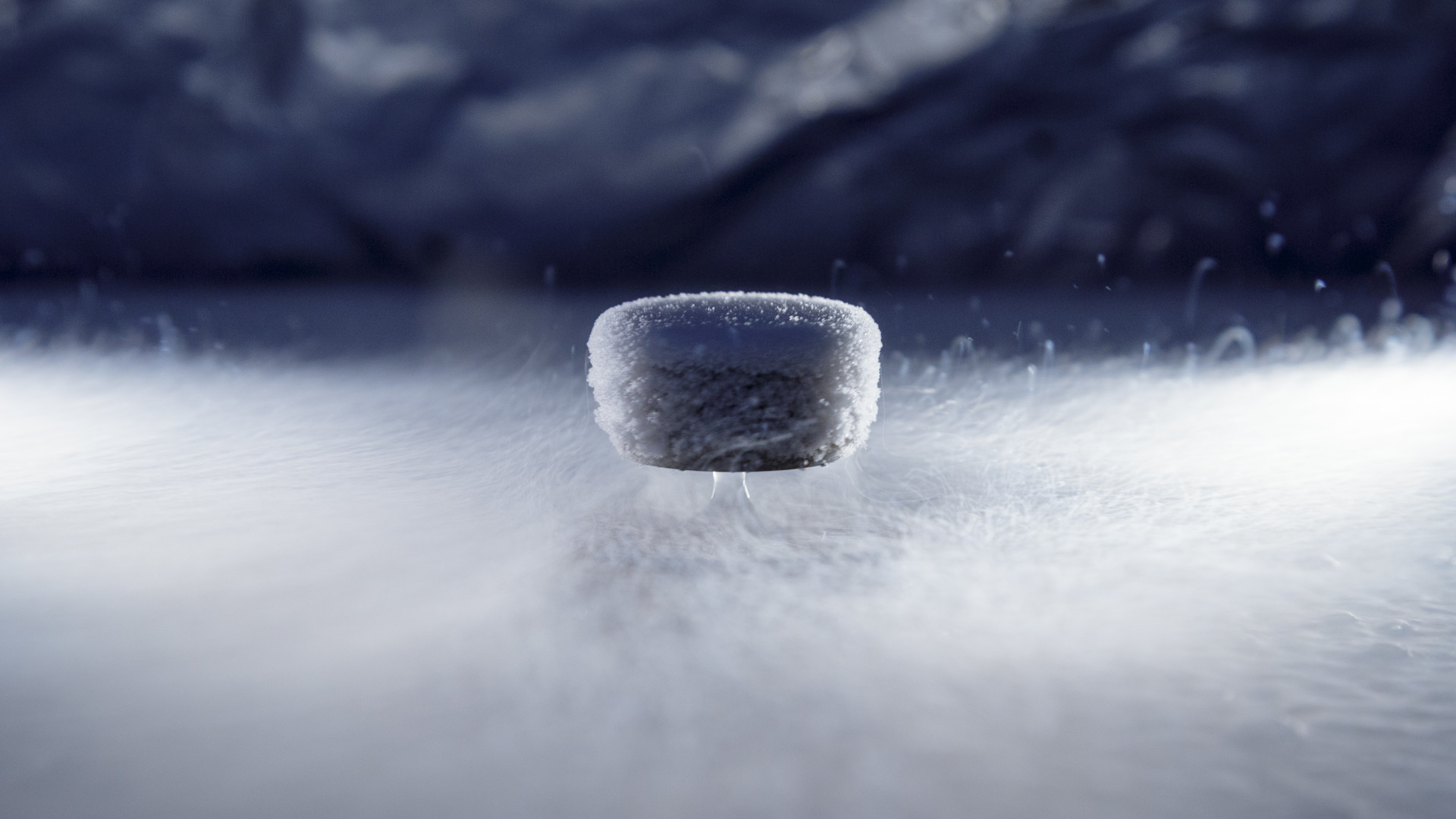Interview: Retracted Papers and Collateral Damage
High-temperature superconductivity is one of the holy grails of physics. It also seems to attract a steady stream of controversy, with a recent string of retracted papers and provocative claims that haven’t held up to scrutiny.
Superconductivity is the name physicists give to an unusual phenomenon in which a material is able to conduct electricity with no resistance. While the effect has been known for more than a century, so far superconductivity has only been found to occur at incredibly low temperatures. And in the few cases where it’s been achieved at anything approaching the balminess of a winter’s day in Antarctica, it’s required mind-bogglingly high pressure comparable to the pressure deep in the Earth’s core.

Computational materials scientist Eva Zurek studies superconductors — materials that have no electrical resistance below a certain critical temperature.
Visual: Courtesy of Eva Zurek
The stakes are enormous: If superconductors worked at anything close to room temperature, it could lead to everything from levitating trains and improved MRI scanners to better energy storage devices and more efficient electronics in general. Perhaps because of that potential, the field has spawned a great deal of hype, often accompanied by disappointment.
In July 2023, scientists in South Korea claimed to have found a room-temperature superconductor that they named LK-99; however, other scientists failed to replicate the team’s results. Undark has also reported on an ongoing controversy surrounding the work of University of Rochester physicist Ranga Dias, three of whose papers have been retracted within the last two years — two in the journal Nature and one in Physical Review Letters. (Two of the three papers involved superconductivity. In August, the New York Times reported that Dias was under investigation by his university.)
Even so, excitement continues to surround materials known as superhydrides — hydrogen-rich materials that appear to allow for superconductivity at higher temperatures, albeit under tremendous pressure — which is why researchers like Eva Zurek, a computational materials scientist in the chemistry department at the University at Buffalo, continues to be fascinated by them.
Our interview was conducted over Zoom and email, and has been edited for length and clarity.
UD: Do you feel that it’s in part because the stakes are so high that we see what seems like a disproportionate number of disputes and controversies surrounding superconductivity?
EZ: Because the stakes are so high in superconductivity, people will want to replicate the experiments and, as a result, errors are more likely to be revealed. If the science is not high stakes, people are less likely to repeat it, and less interested in ensuring that the results are correct.
UD: Could some of the controversy be avoided if scientists were more open in terms of making their methods and data available for scrutiny?
EZ: I think there are a few reasons why there is controversy. First of all, making sure that you are reporting something that is a superconductor and not just a metal with strange properties, can in some cases be very difficult. So in the case of the hydrides, for example, it was really hard to show that they do indeed expel a magnetic field — that they exhibit what is known as the Meissner Effect — just because of the way that the experiments are performed in diamond anvil cells that have a lot of magnetic material. So it’s just experimentally difficult, in that case, to actually 100 percent prove that what you have is a superconductor.
Of course, there are other issues about reporting all data and making sure that researchers have access to it. But, there are issues about fraud, and then there are issues about not being able to prove something 100 percent correctly at that given time because of experimental limitations, which are two separate issues.
UD: Can you expand on that?
EZ: In high-pressure experiments, such as those that Dias did, it is difficult to design the experiment so that you measure what you would like to measure. The next difficulty is in interpretation of the experimental results. You measured something, but what does it correspond to in reality? So yes, the science is difficult to perform, and when results are obtained it can take be extremely difficult to determine what it means.
This is one reason why first-principles calculations are so useful. They can help constrain the experimental interpretation. Even the most honest and smart scientists can make these types of mistakes, and hopefully when others repeat the experiment and try to interpret the results, they will converge closer to what is the truth.
Intentional fraud is something very different, and should not occur, nor be tolerated.
UD: What about the role of the journals themselves? Do the retractions suggest that the journals possibly need to be more vigilant in terms of the research they accept for publication?
EZ: There are some journals that obviously would like to increase their impact factor, and would be willing to publish research that has a higher impact factor. Of course, they do go through the review process, allegedly. So the journals will protect themselves by saying that.
But I think it’s the whole procedure. Scientists would like to publish something in those journals. And therefore they want to make their work sound potentially more important than it is — otherwise their work will not be refereed by certain journals, not even sent out for review by those journals.
And then, if you want a grant or if you want to continue your grants, then you have to show to the grants people that you’re publishing in those journals — so there’s a whole mechanism involved in this. It’s not just the journals, I think. It’s publishing, funding, journals, and so on.
UD: Has the controversy at all damaged the field’s reputation? Do you worry that that young scientists or funding agencies might be scared away from superconductivity research?
EZ: I think that there’s been a lot of press looking at various controversies. What the press should realize is that there have been also a number of successes. So, for example, I think that the work of Mikhail Eremets on H3S that was shown in numerous experiments and also in theoretical calculations to have particular superconducting properties — that should be hailed as a success. There has been work on LaH10 by Eremets [and Russell] Hemley.
I would say there’s at least five to 10 examples in the high-pressure hydrides that I think that everybody would agree upon, right now, are superconducting. And so I think it’s, in a way, sad that one bad apple makes people wary of a whole field. But yes, I do think that the controversies have been damaging to reputations.
UD: How do you see the future of the field developing?
EZ: I think pretty much everybody believes that if you can make room-temperature, ambient-pressure superconductor, then you’re slated to win the Nobel Prize, and also, potentially, cash in on a number of patents. So I think that there are a lot of incentives for researchers to continue down that way.
UD: Is it potentially a problem if the people who are doing research on superconductivity also have patents, or if they have a startup that they founded and are trying to make some money? Or is that just an inevitable part of how research like this is carried out these days?
EZ: I think that’s just how research is carried out these days. I’m in a chemistry department, and a lot of my colleagues work on drug discovery. And they of course will patent the drugs that they might invent for cancer or for whatever it is. And I don’t think that this is any different, except potentially more lucrative.
UD: You and Dias have collaborated in the past — with that in mind, I’m wondering how the retractions of his papers, and the media attention that surrounded them, affected you personally. Has it has impacted your career?
EZ: Yes, we were both involved on a funded center grant and through this grant collaborated on one manuscript. My group calculated the Raman spectra of potential superconducting hydrides, for which Dr. Dias had obtained experimental data. They gave us their experimental results first, and we calculated the Raman spectra of possible structures to try to determine the structure of the material that they made. The match between the computed and experimental Raman spectra was very good.
I have tenure, and I publish on the order of 15 papers per year. And, I have always presented computational results faithfully. So, I don’t think the situation has hurt my scientific reputation.










